Bill Gates, Elon Musk, Warren Buffett, any of the U.S. presidents for that matter — they seem superhuman with what they’ve achieved (so far). Yet these individuals have the same number of hours in a day as the rest of us.
So how did one build one of the largest technology companies in the world and another fly astronauts to the International Space Station? And how did Buffett become one of the most successful investors in the world?
They prioritize ruthlessly.
If you were hoping for a secret formula, look elsewhere. These individuals got to where they are now because of their ability to prioritize. One way to follow in their footsteps and get closer to your goals is to create a priority list.
In this article, we’ll take a look at what a priority list is and how to create one. We’ll also give you a template to kickstart the process.
What is a priority list?
A priority list is a list that contains your priority items — the stuff that brings you closer to achieving your personal and professional goals.
Everyone has goals. Whether you want to lose weight or start a business, the first step to turning those dreams into reality is to get them down on paper. The instinctual way to create a priority list might be with pen and paper. But when it comes to updating and maintaining it, you’re probably better off with something a little more advanced.
Keep in mind, digital does not have to mean difficult.
You can use a super-intuitive task management platform like monday.com to create and maintain your list of priorities in one place, in lieu of a crumpled post-it note.
Here’s an example of a priority list you can create on monday.com:
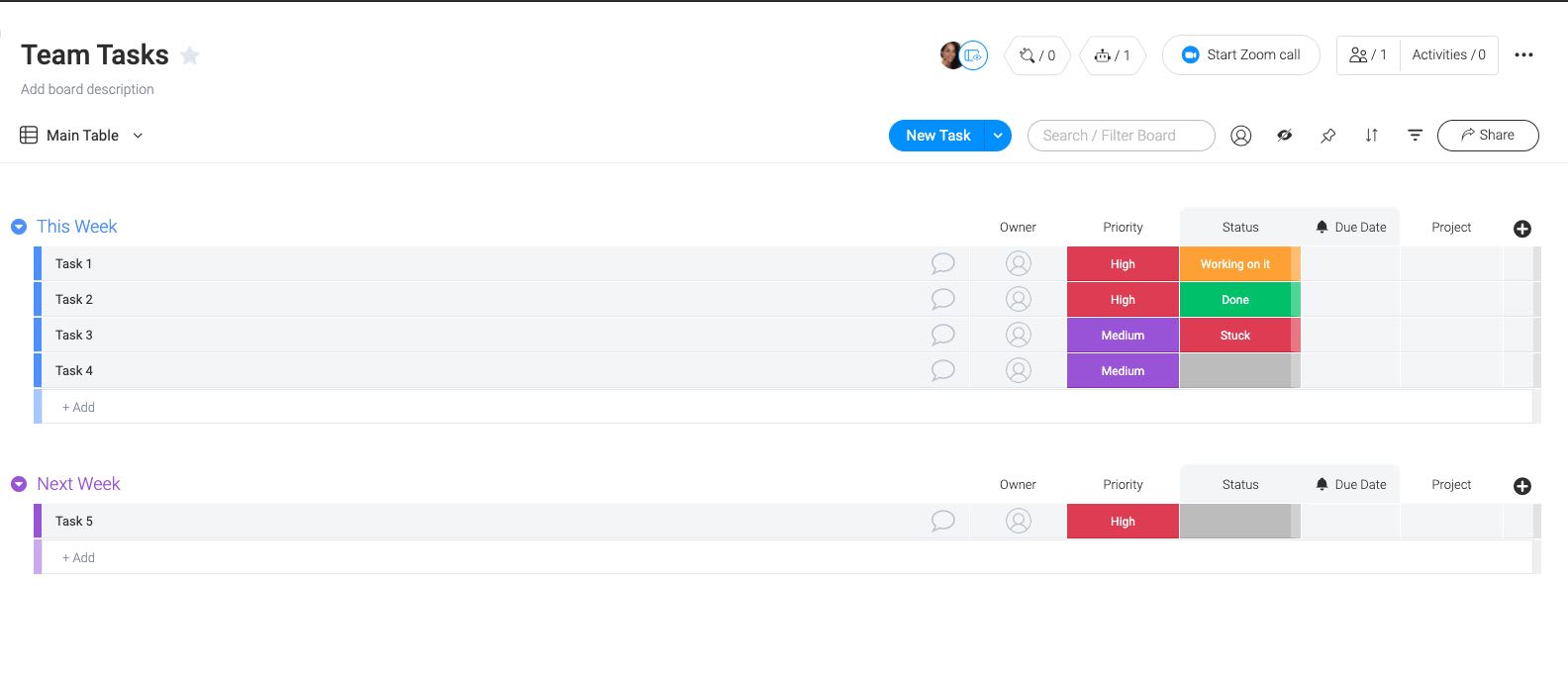
How you create your priority list comes down to personal preference. What’s important is you have a way to capture tasks and set priorities to make sure they stand out.
Why make a priority list in 2023?
There are only so many hours in a day. While it’s not the end of the world if you get sidetracked, it is important to make a priority list to maximize productivity and progress towards your goal.
Organize your most important tasks
To-do lists are often filled with an endless number of things that we need to do, from scheduling a meeting to checking in with a friend. There’s nothing wrong with a to-do list like this, but it lacks structure and focus.
Remember, not all tasks are equal. A priority list helps you manage and organize important tasks that contribute to your long-term goals.
Stay focused
Email is a frequent workplace distraction. One study found that the average worker spends about 3.1 hours checking email.
Your priority list can serve as a powerful reminder of what you need to focus on, so you’re less likely to waste time on things that are sapping away your energy.
Delegate and delete
You simply can’t do everything yourself; a priority list helps you identify tasks that you can delegate to others.
For example, getting published on an authority site can raise brand awareness and drive more traffic to your site. Content creation would be an example of a priority item, but tasks like formatting images are not; they can be delegated.
As an added benefit, studies have shown that delegation empowers employees, as it’s a clear sign that you trust them to get the job done.
A priority list can also help you determine which low-priority items -that have little impact on your long-term goals- can be eliminated. Remove them to prevent wasting time on work that won’t pay off — like lovingly crafting those beautiful reports that no one ever reads.
Make tracking your progress easy
When you aren’t able to visualize your progress, especially for long-term goals, you may feel overwhelmed and give up prematurely. A priority list helps you keep track of your progress as you reach milestones.
Using the Timeline Column in monday.com can help you map important milestones and see an overview of project progress.
Here’s an example of how the Timeline Column looks in monday.com:

Seeing steady progression towards your long-term goals and how far you’ve come along can motivate you to keep going. It provides a clear indication that your efforts are working.
Now let’s look at how to create an effective priority list and turn “someday” into reality.
How to create a priority list
Creating a priority list requires some core steps to set you up for success.
#1. Write down all your tasks
The first order of business is to get everything down in a Master List — a list that contains all of your tasks. Think of it as a “brain dump” where you’re putting all the things that might pull your attention away onto paper.
If you want to get everything organized in one place, consider using a project management tool like monday.com — it makes prioritization a breeze.
Here’s an example of how you can manage your tasks on monday.com:
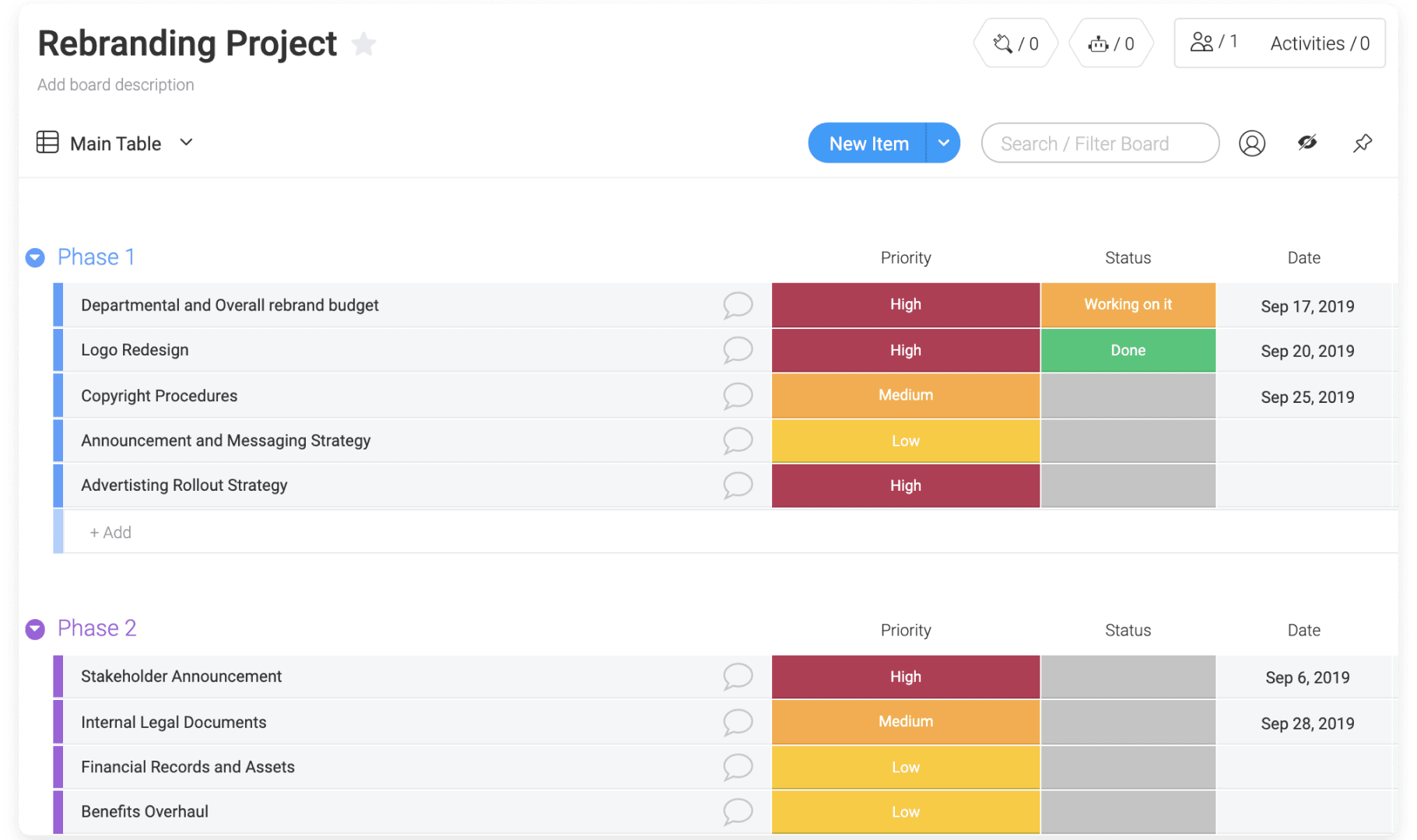
You can use the Search Everything feature to quickly find what you need, whether you’re in the office or on-the-go.
There are also many tools on the market to help with product roadmap planning you should consider trying, like Canny, for example.
#2. Distinguish between urgent and important
Each task on your master list has varying levels of importance.
If you’re having a hard time determining what to focus on first, you’ll find the Eisenhower Matrix useful — it’s a technique that was developed by former President Eisenhower.
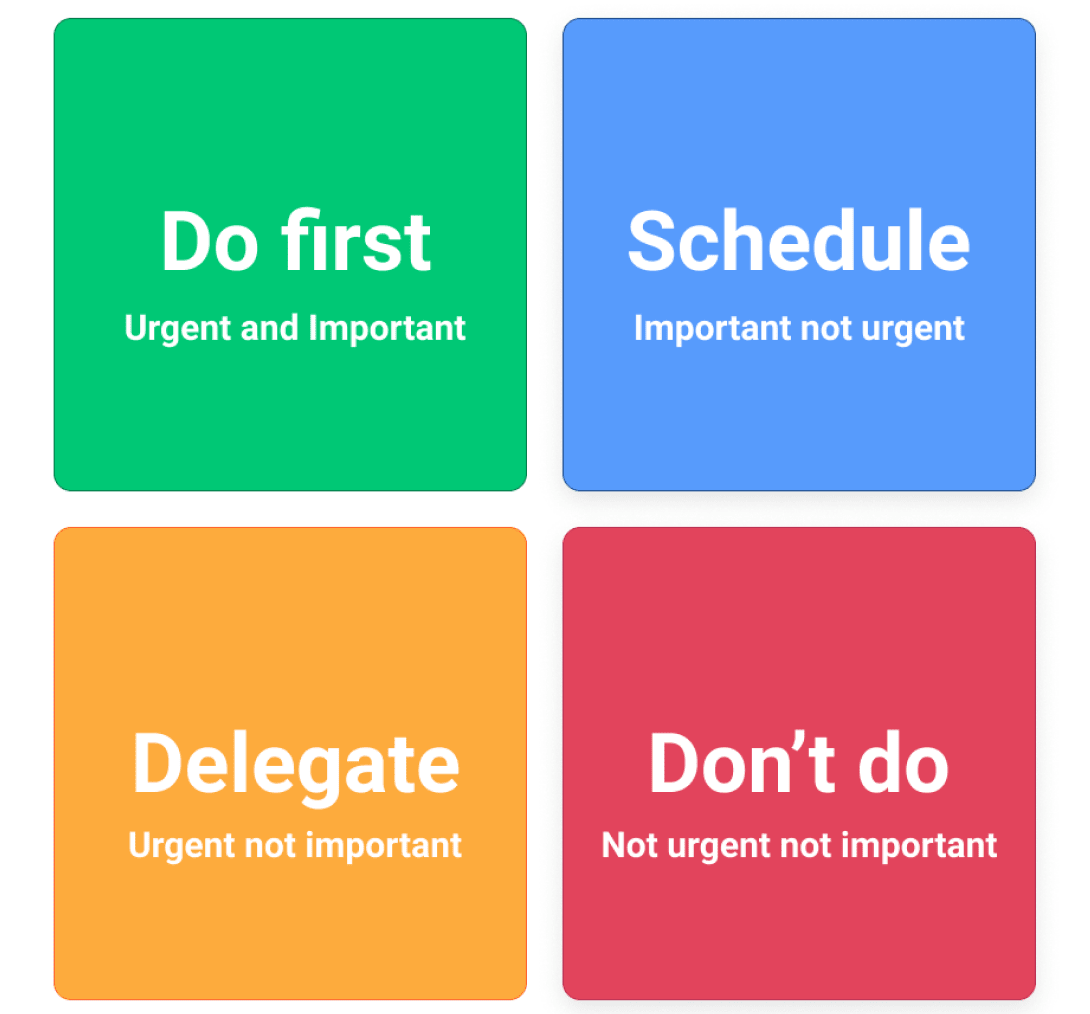
The Eisenhower Matrix can help you identify tasks that are urgent and important. Let’s look at the first quadrant:
These are your high priority tasks as they are both urgent and important:
- Urgent: These tasks require immediate attention. Examples include projects with a looming deadline or issues that are suddenly sprung onto you like hazardous substances at a factory.
- Important: These tasks contribute to your personal or professional long-term goals. Importance is subjective; an example could be exercising in the morning.
Here’s an example of how you can use monday.com to create an Eisenhower Matrix:
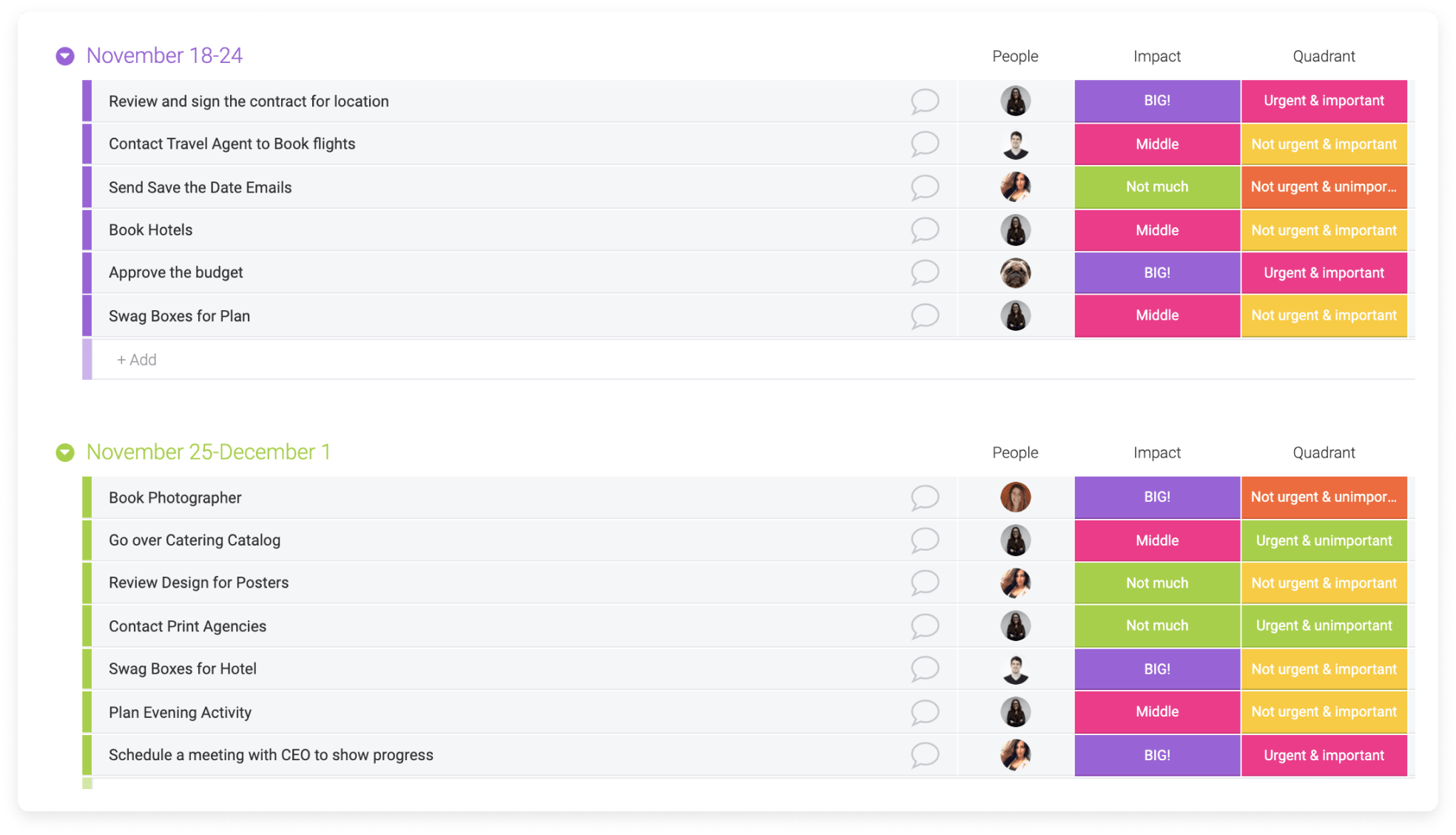
Color-coded labels help you quickly identify tasks that are urgent and important, and therefore prioritized above all other work.
#3. Schedule, delegate, or delete tasks
Distinguishing between urgent, non-urgent, important, and unimportant can help you prioritize the work that you need to do now. Spending too much time trying to tackle everything right now can lead to increased stress and burnout.
That’s why second quadrant-tasks of the Eisenhower Matrix (important, not urgent) should be scheduled in your project calendar. They’re vital to complete, but not essential before clocking out for the day.
Here’s an example of how you can use the Calendar View on monday.com:
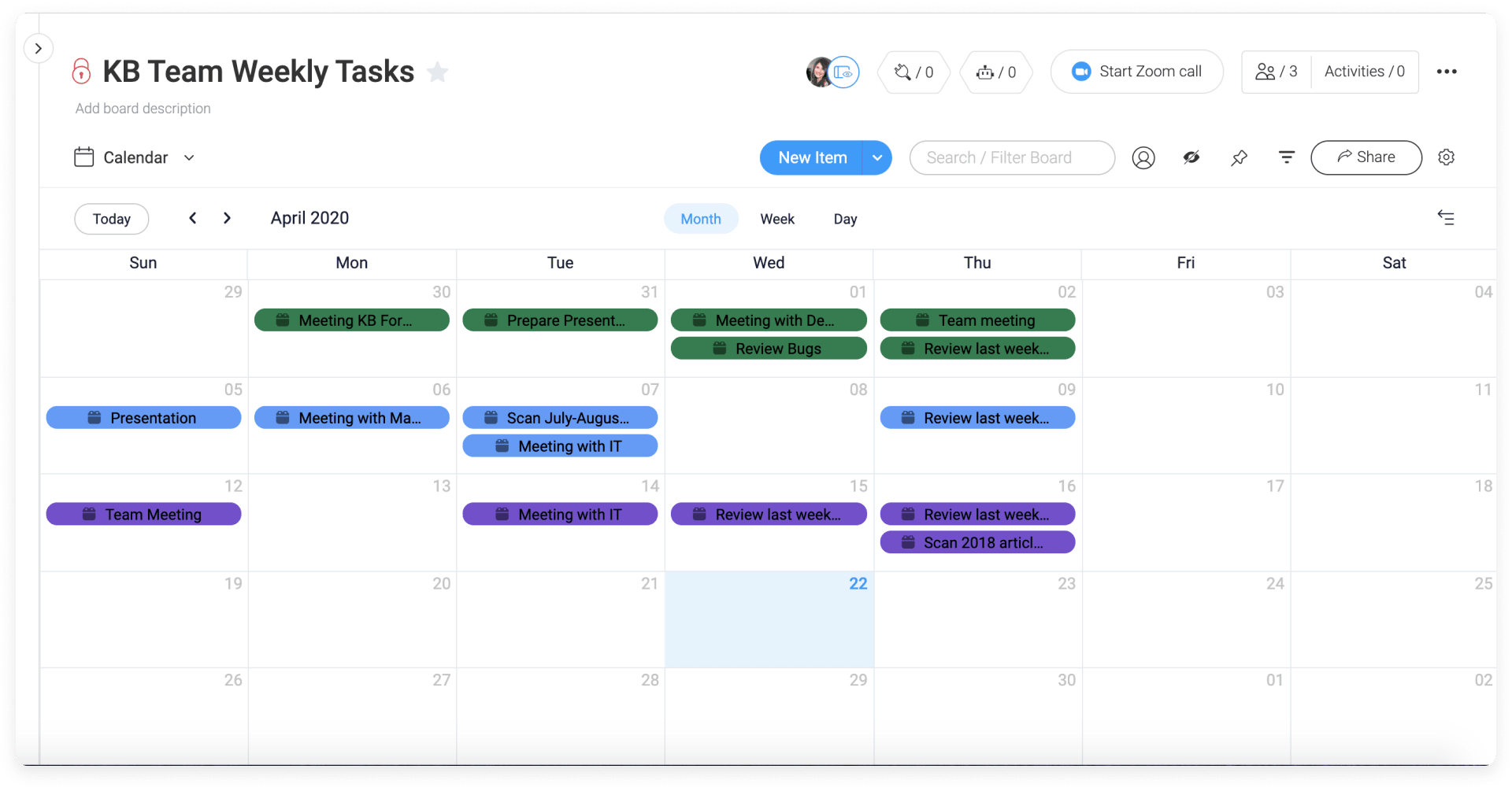
The Calendar View lets you easily schedule new items and see a breakdown of what you have coming up.
Tasks in the third quadrant (urgent, not important) don’t contribute to your long-term goals or make the best use of your skillset. These are tasks that you can and should delegate to others unless you have idle time on your hands.
Here’s how you can delegate tasks to individuals or entire teams on monday.com:

Finally, delete any tasks in the last quadrant (not urgent, not important) altogether.
#4. Order your tasks
By now, your priority list should be coming together. What should you work on first?
To help rank your highest priority tasks in each quadrant, assign each task a rating of 1 to 5 to indicate their priority with 1 being the highest and 5 being the lowest. Or, you can add High, Medium, and Low labels to your tasks to indicate their priority.
Here’s an example of how you can prioritize tasks with color on monday.com:

#5. Tackle your list
To help yourself stay on track and manage workload, utilize productivity systems to understand how and where you’re spending your workday. If you see that you’re spending a lot of time on a repetitive task, look for ways to either streamline or delegate it.
Here’s an example of how you can track time on monday.com with the Time Tracking column:
![]()
If you prefer playing with tables and conditional formatting to see exactly where your time is going, you can also export data from the Time Tracking column into Excel.
What’s your priority?
It’s easy for things to pile up — work emails, incoming notifications, etc. If you don’t prioritize, you’ll have little time for the stuff that actually matters to you. Creating a priority list helps you inch closer to your goals.Here’s an Eisenhower Matrix template that you can use to prioritize your tasks based on their urgency and importance. From there, you can make the most informed decision to take the lead, schedule it for the future, or delegate it to someone else.
